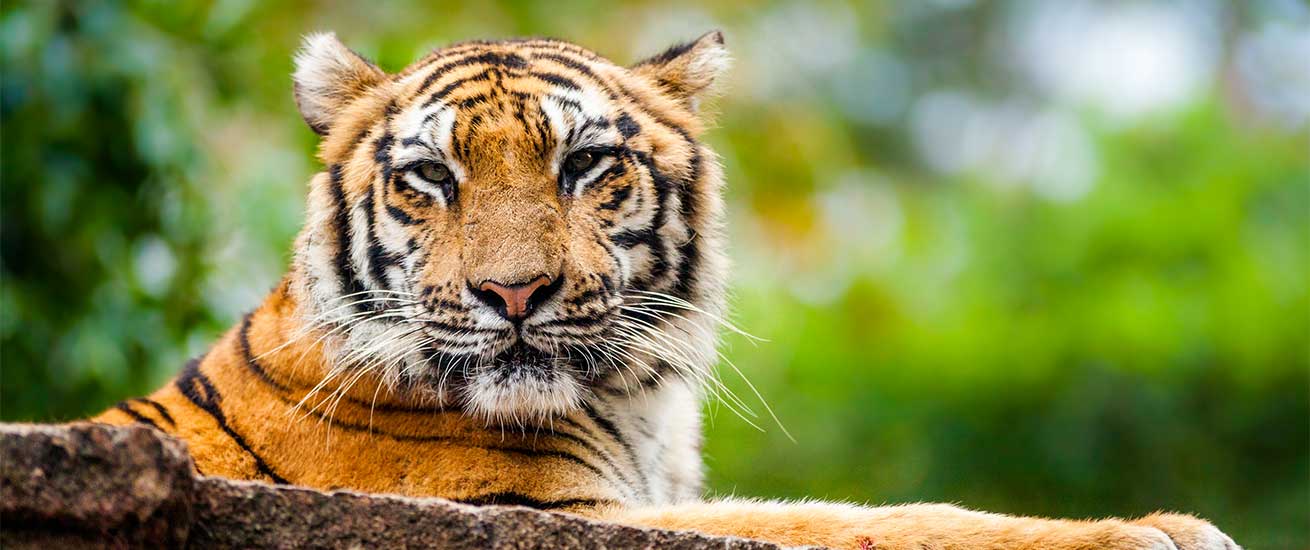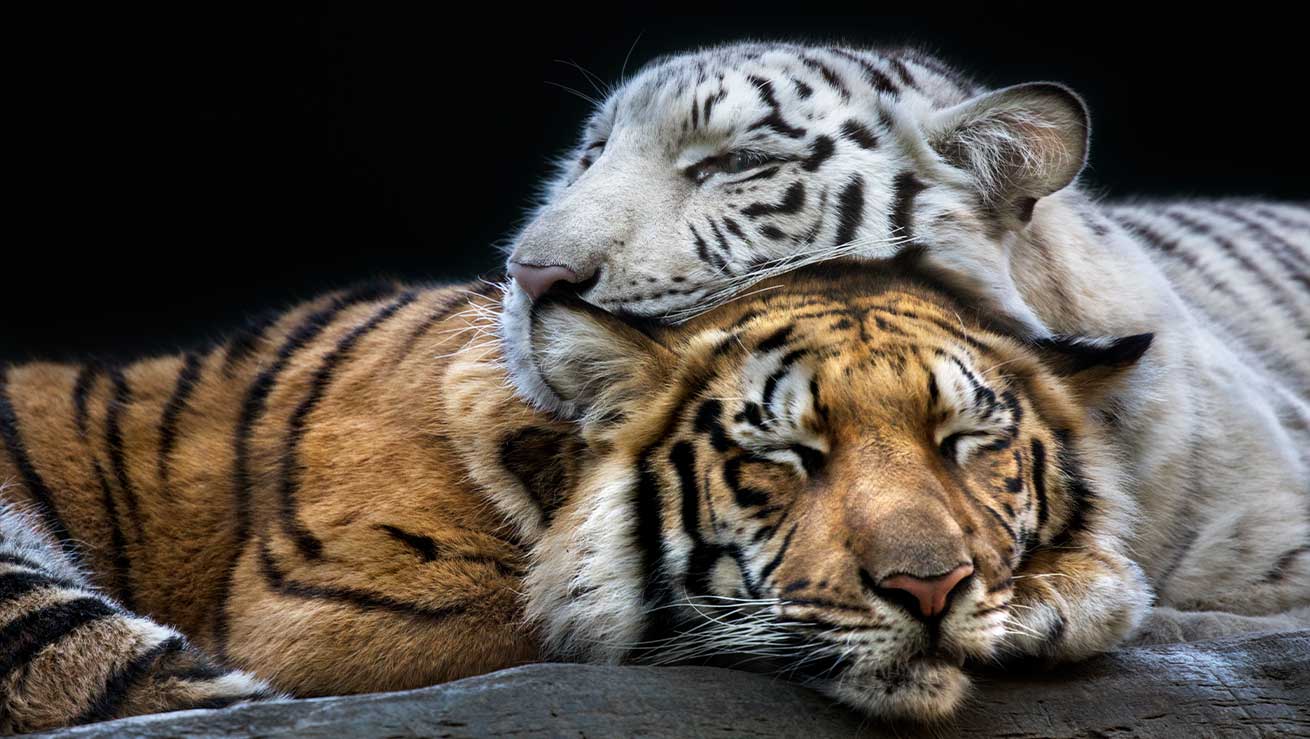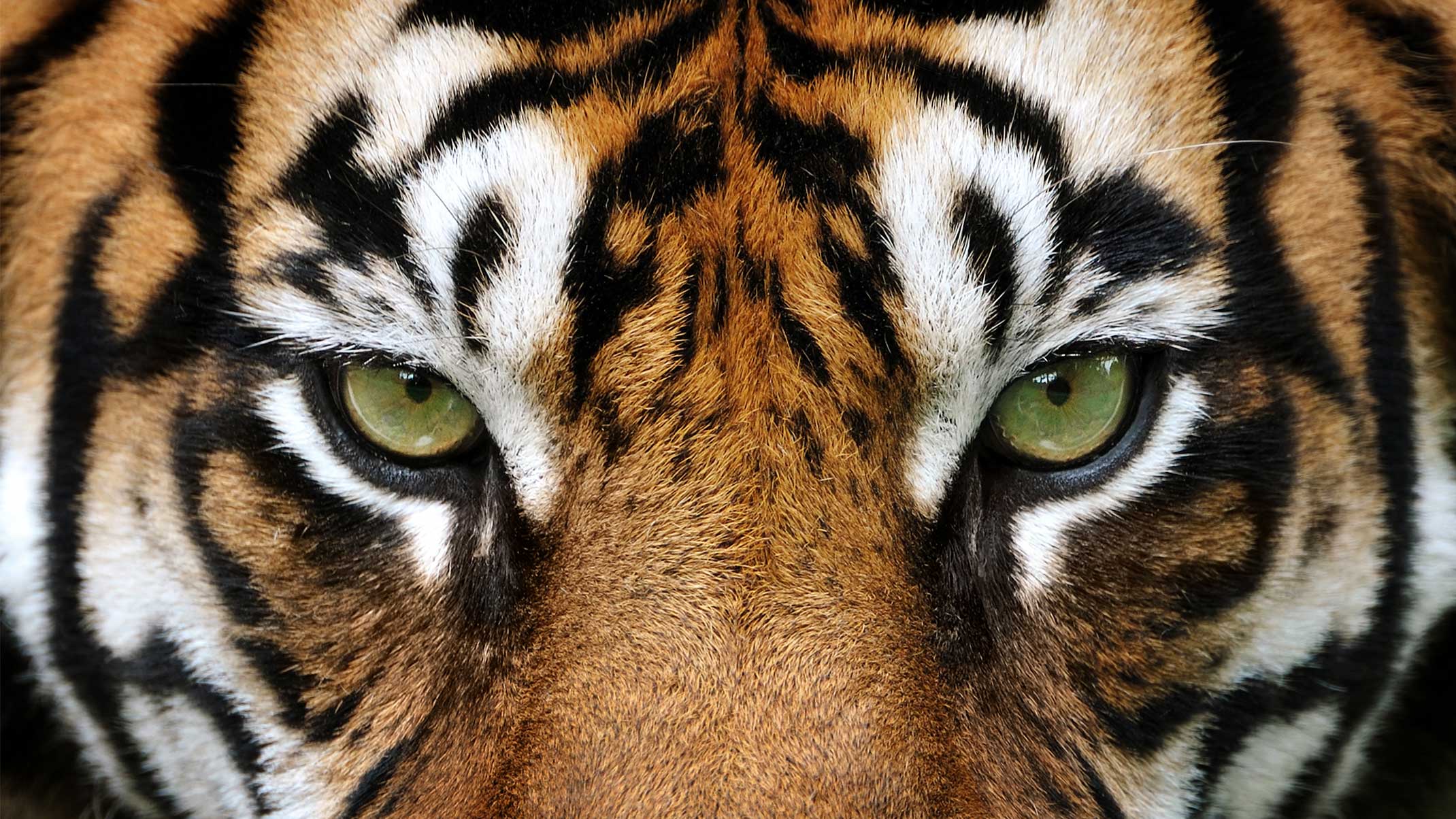In this article
1. Tigers are the largest wild cats in the world!
Of all big cats, tigers definitely take the cake when it comes to size. Male tigers can reach 390 cm (12.8 ft) in length and weigh as much as 300 kg (660 lbs), dwarfing other felines. Did you know that tigers deserve to be crowned “king of the jungle” instead of lions? Tigers are much larger, and lions don’t even live in the jungle, while tigers do.
2. There are 6 different tiger breeds
When thinking of a tiger, you probably picture the Bengal tiger with their vibrant orange color, black stripes and white accents. But there’s also the Siberian tiger which has a paler color and thick coat to help them survive in the snow. The Indochinese tiger and Malayan tiger have narrower stripes, while the Sumatran tiger is the smallest of all breeds. Finally, there’s the extremely rare South China Tiger which hasn’t been spotted in the wild since the 1980s. Three more tiger breeds used to exist (Caspian tiger, Bali tiger and Javan tiger), but these unfortunately have long been declared extinct.



3. Tigers are endangered
Only 150 years ago, an estimated 100,000 wild tigers roamed the planet. Today, their number is down to only 3,900. In 2010, the WWF expressed the goal of doubling the number of tigers in the wild to at least 6,000 by 2022. Even though the numbers are on the rise, there is still a long way to go.
4. Each tiger’s stripes are unique
The striped pattern on a tiger’s coat is much like a fingerprint: no 2 are the same! Did you know that besides its fur, a tiger’s skin is striped, too? This means that, when one of these giant cats is shaved for surgery, their lovely stripes remain.
5. Not all tigers are orange
Even though they are incredibly rare, some tigers are white! Due to a genetic mutation, about one in 10,000 tiger cubs are naturally born white with black stripes. There’s even an additional genetic condition that can even cause tigers to be white and have no stripes at all! Rumor has it that in 1910, a smokey blue tiger with black stripes was spotted in the Chinese province of Fujian. However, no one has ever been able to prove the story to be true.

6. Tiger cubs are fragile and born blind
When a tigress gives birth, she usually delivers 2 to 4 cubs. For the first 6 to 12 days of their lives, tiger cubs are completely blind. After opening their eyes and growing a little more, mom teaches them how to hunt. The learning curve is steep and overconfident cubs often get badly hurt by their prey. This is the main reason why only 50% of tigers born in the wild ever reach maturity. Once the cubs are 24-30 months old, they venture out to start a life of their own.

7. Tigers hunt by ambush
Much like domestic cats, tigers have soft paw pads that allow them to sneak around without being noticed. In addition, their stripes are a great help in staying camouflaged. Tigers will hide behind shrubs or trees to suddenly jump out when the time is right to attack their prey. Even though they are masters of stealth, tigers only have a 10% success rate when hunting. Luckily, a large, tasty meal lasts them a week.
8. Tigers don’t usually attack humans
Unless startled or provoked, tigers usually prefer avoiding humans rather than attacking them. However, you don’t want to anger a tiger as these giants can run at speeds of up to 60 km/h, and their massive paws are strong enough to shatter bones with a single swat. In certain areas, villagers wear a mask resembling a human face on the back of their head to prevent any surprise attacks from behind.

9. Tigers love to swim
Unlike lions, cheetahs, and sand cats, tigers live in forests. In this lush environment, large bodies of water such as rivers and swamps are never far away. While most cats hate getting their fur wet, tigers love to spend time in the water. They are amazing swimmers and, just like humans, enjoy a quick splash to cool down and relax.
10. Tigers can’t purr
Even though tigers are basically just massive cats, they cannot purr. Did you know that big cats can either roar or purr but never both? Tigers are excellent at roaring, and it’s even said that cubs actively practice their mighty roar. This wouldn’t surprise us, as an adult tiger’s roar can be heard up to 3 km (1.8 miles) away!















